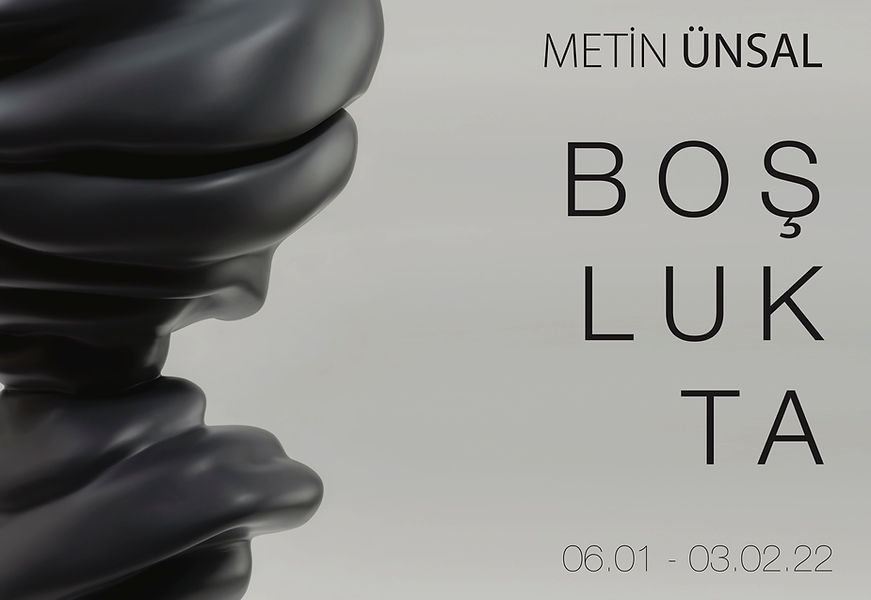In The Void
BOŞLUKTA
06.01 - 03.02.2022
Galeri Işık Teşvikiye
Curator: Rafet Arslan

İnsanın ruhu onun yaşadıklarının aynasıdır ve yaşanan her şeyin olumlu ya da olumsuz etkisi bu ruh-form içinde kayıt altındadır. Sanatçı Metin Ünsal bu kavrayıştan yola çıkarak tüm canlılara, özellikle kadına yönelen eril şiddetin ruhlarda yarattığı hasar üzerinden yapılandırdığı bir estetik dil kurar.
Ünsal’ın imge dünyasında ruhlar başlangıçta saf, naif ve muntazam formlarla var olurlar. Fakat maruz kaldıkları şiddetin etkisiyle formları bozulur, ciddi deformasyonlara uğrarlar. Sanatçı, bu değişimleri klasik güzellik normları dışında, şiddetin etkilerini belirgin kılan bir görsellik üzerinden aktarır. Yaşanan deformasyon, onların varoluşlarında travmatik değişimler yaratır. Sanat bu travmayla yüzleşme de, acının ifadesinde ve şiddetin ifşasında rol oynama misyonuna da sahiptir. Aslında yaşanan şiddet tüm biçimleriyle ulu ortadır; fakat gündelik olanın akışı içinde toplumsal bir sis içine gömülür. İnsanlar yaşananları görmekten, görse algılamaktan ve hepsinden öte idrak etmekten uzaklaşmıştır.
Metin Ünsal’ın eserlerine konu olan ruhlar bilinmez bir evrende yaşarlar. Bazı ruhlar boşlukta salınırken bazıları ise mekânsal bir sıkışıklık içinde hapsolmuştur. Yalnız ya da birlikte sürgün edildikleri bu evrende karşılaştıkları zorbalığa rağmen var olmaya devam etmektedirler. Onlara kader olarak dayatılan koşullara karşı iradelerini ortaya koyarlar. Ünsal, gerçekliğin yadırgatılarak yeniden algılanmasına olanak sunan bir plastik evren yaratırken aynı zamanda izleyicileri imgelerin taşıdıkları anlamlar üzerine düşünmeye sevk eder.
Bu ruhlar hangi hayatları yaşamış, nasıl zorbalıklara maruz kalmışlardır? Zamansız bir âlem içinde acı katmanlarına bürünmüş ruhlar, farklı farklı
hikâyelere sahiptir. Her bir ruhun yaşadığı hikâye birbirine eklenerek kadın, çocuk ya da tüm canlıların uğradıkları şiddete dair bir panorama oluştururlar. Her şiddet hikâyesi ona karşı direnme biçimlerini ve onu mahkûm edecek çabaları da içinde barındırır. Maruz kaldıkları evrenin kurallarını bozan da, yaşama yeni nefes kanalları açan da bu dirençtir.
Ünsal, resim, heykel ve 3D animasyon gibi farklı teknikleri iç içe ve yan yana kullanarak anlatmaya soyunduğu hikâyeler için yeni ve yetkin görsel ifade biçimleri aramaktan çekinmez. Ve bunu yaparken benimsediği tavır, deneye ve farklı işbirliklerine açık bir kontrol halidir. Resimlerinde güçlü fırça darbeleri, renk seçimi ve yaratıcı imgelem ile birleşerek olgun bir plastik derinlik yaratır. Heykellerinde form, kütle, ölçek gibi temel meseleleri, boşlukta olmaya dair gerek kavramsal, gerekse de pratik çaba ile birleştirir. Sanatçı, yeni sergisinde resim ve heykelin bir araya geldiği melez formlar da yaratarak malzeme ve deney ile olan serüvenini bir üst aşamaya taşır.
Metin Ünsal’ın “Boşlukta” sergisinde; eril şiddetin boşluğa itmeye çalıştığı ruhlar en kötü koşullarda bile direnmeye, var olmaya, var etmeye devam ederler. Onların boşluğun sancısını aşacak güç ve iradeleri, dünyanın daha yaşanabilir bir yer haline gelmesinin de anahtarıdır.
Rafet Arslan
%20copy.jpg)